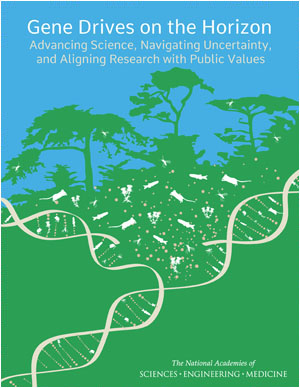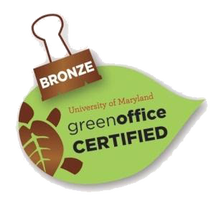 ANSC (Animal & Avian Sciences) and MOCB (Molecular & Cellular Biology) faculty member Lisa Taneyhill is being recognized this week for her innovative work on a recent report from the National Academy of Sciences. This thrilling and fearsome work pertains to the topic of Gene Drive, a genetic altering technique. This process, currently confined to highly specialized field and lab studies, invites in a new method for scientists to modify plants and animals. Gene Drive causes not only genetic changes in one generation of a population, but also increases the likelihood for these changes to be inherited by subsequent offspring. One noteworthy achievement of Gene Drive pertains to one group of scientists at the University of California who produced a population of mosquitoes with genes that block malaria. The potential use for Gene Drive to combat malaria induced deaths in various African countries is certainly intriguing. The possibility of this technique to modify insects to resist Zika, Lyme Disease, and the West Nile Virus adds to some of the hype. But why is hesitance and even fear expressed over this technology? Taneyhill stated that more studies and experiments are necessary before such organisms are released into the environment. She suggests a “collaborative, cautionary, and multidisciplinary approach” must be applied to this new field of study, which is developing at an accelerated rate. One reason to thoroughly investigate the implications of this technology is for the sustainability of ecosystems. Ecosystems are fragile and easily disrupted balances between living and non-living components. Quick and widespread genetic changes of populations can and most likely will produce unforeseen events, which are currently indeterminate in the nature of their severity. It’s essentially the butterfly effect. Gene driven crops may become resistant to some irksome pests, but also risk becoming susceptible to new diseases or inducing the creation of new diseases. Naturally, this is concerning for agricultural economies, food supplies, and agricultural based ecosystems. Further speculation from other cautious scientists warn about the potential for this technology to be used in acts of bio-terrorism. More specifically, the engineering of insects to carry toxins or new diseases. While the technology is new and the potential is exciting, the other side of the coin brings to light reasons to conduct further multidisciplinary research before deciding to release these organisms into the environment. Gene Drive is rapidly evolving into a controversial topic that is certainly worth following into the future. Congratulations to Lisa for this significant contribution and achievement! Comments are closed.
|
Categories
All
Archives
June 2024
|
Department of Entomology
University of Maryland
4112 Plant Sciences Building
College Park, MD 20742-4454
USA
Telephone: 301.405.3911
Fax: 301.314.9290
University of Maryland
4112 Plant Sciences Building
College Park, MD 20742-4454
USA
Telephone: 301.405.3911
Fax: 301.314.9290

 RSS Feed
RSS Feed




